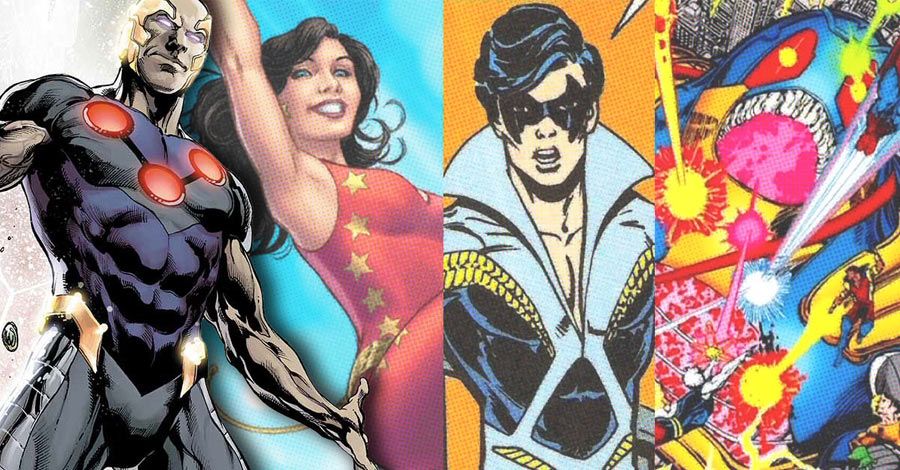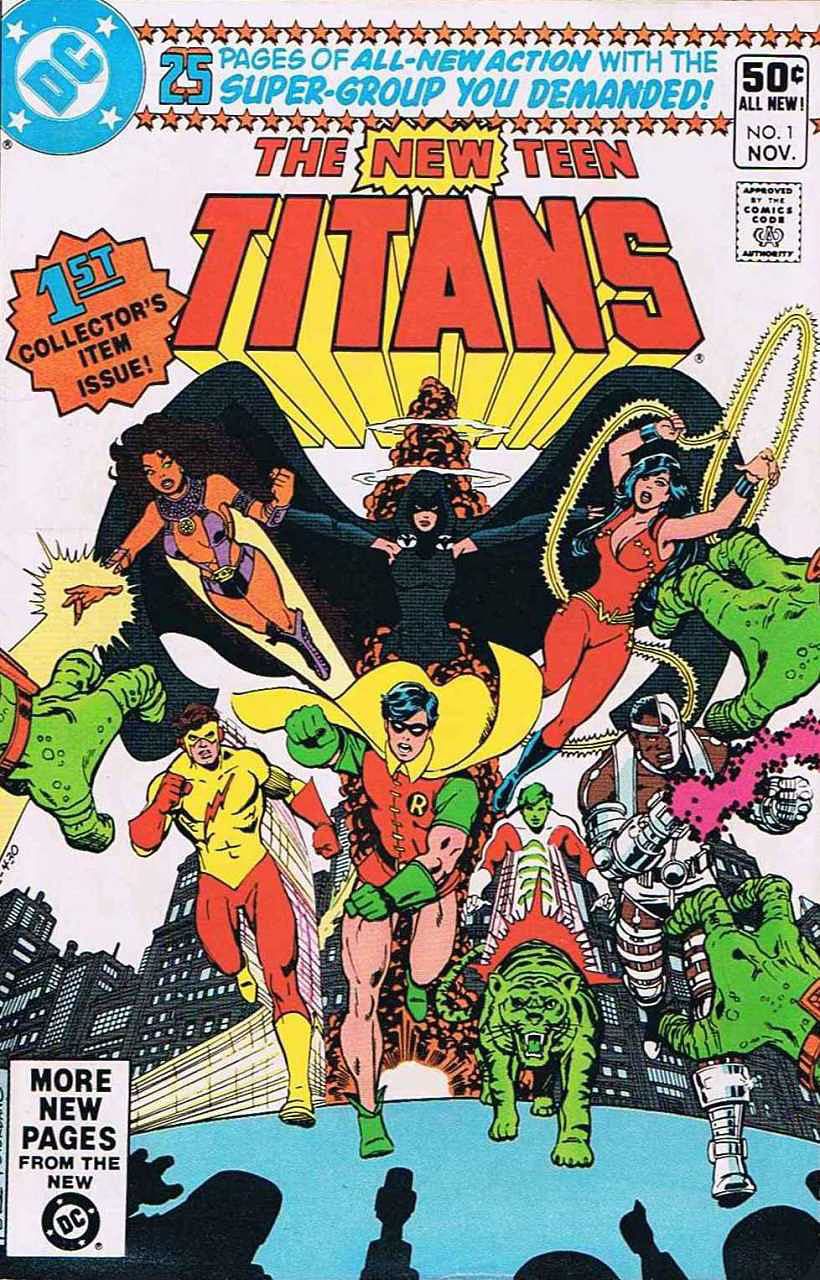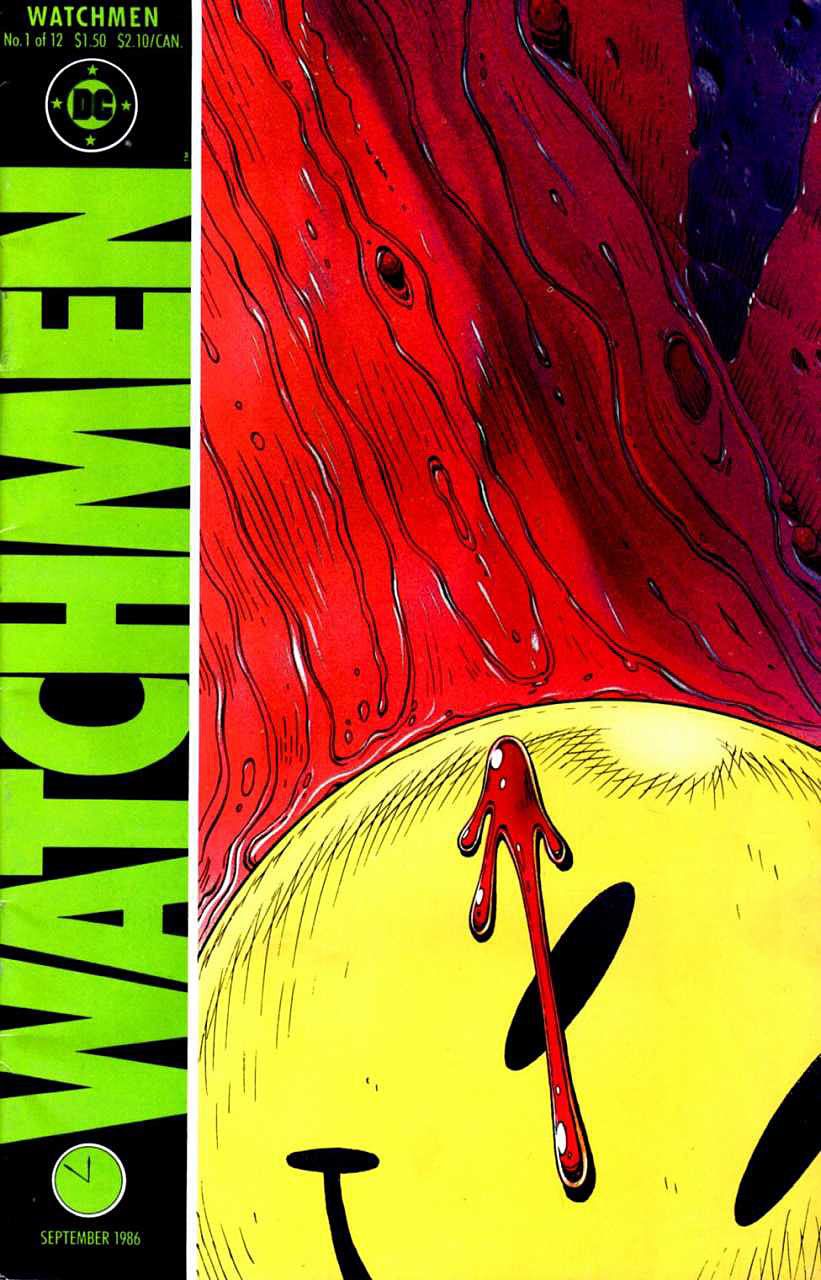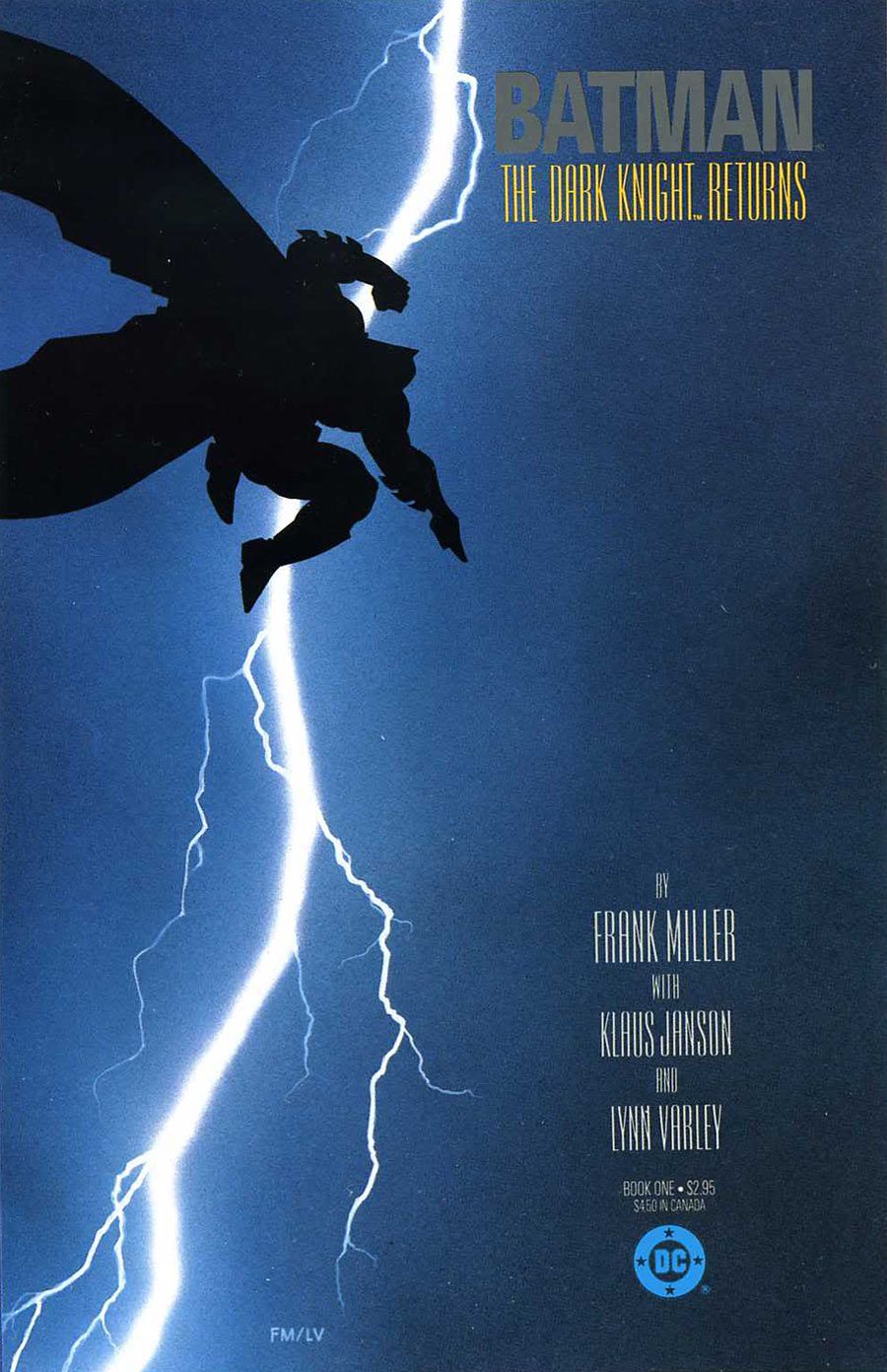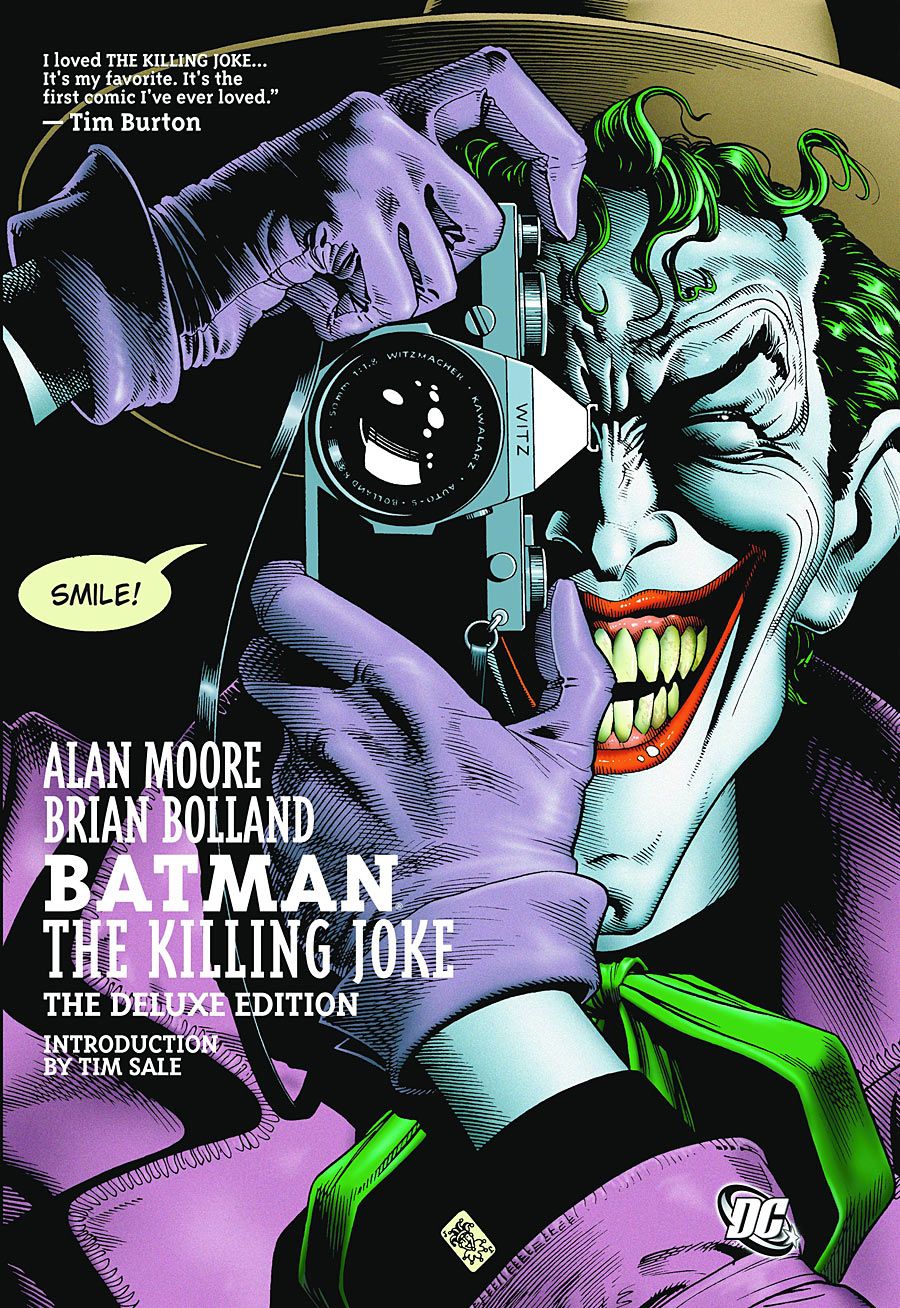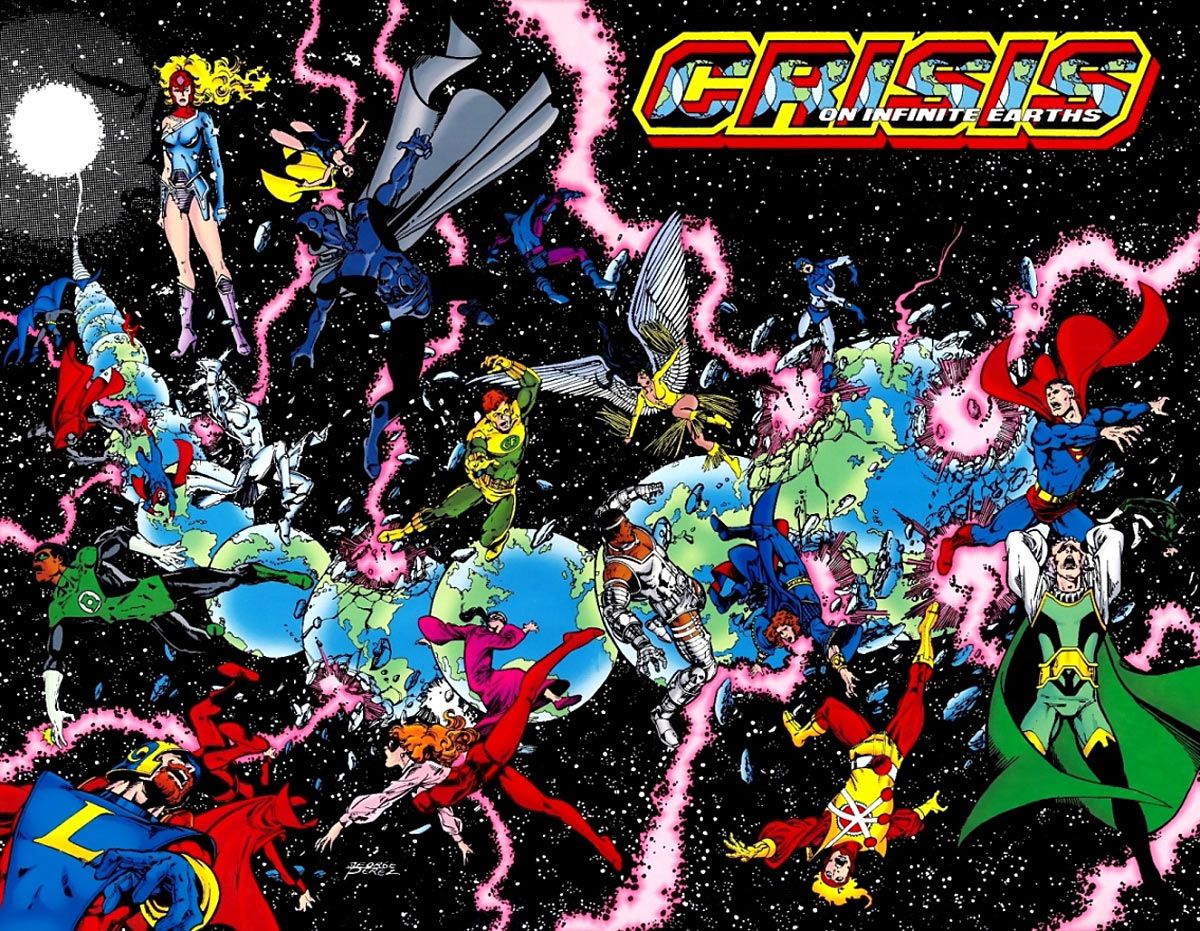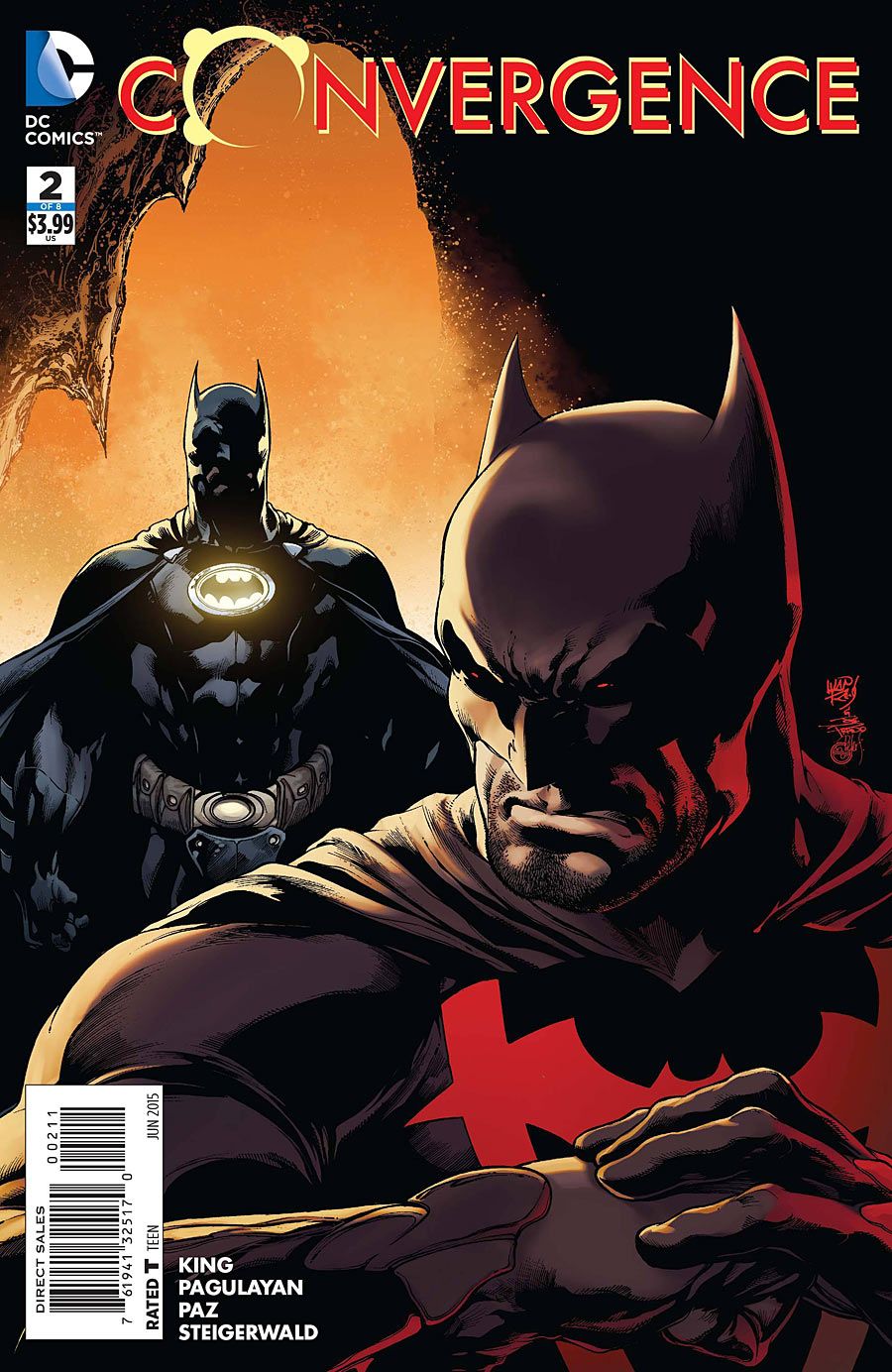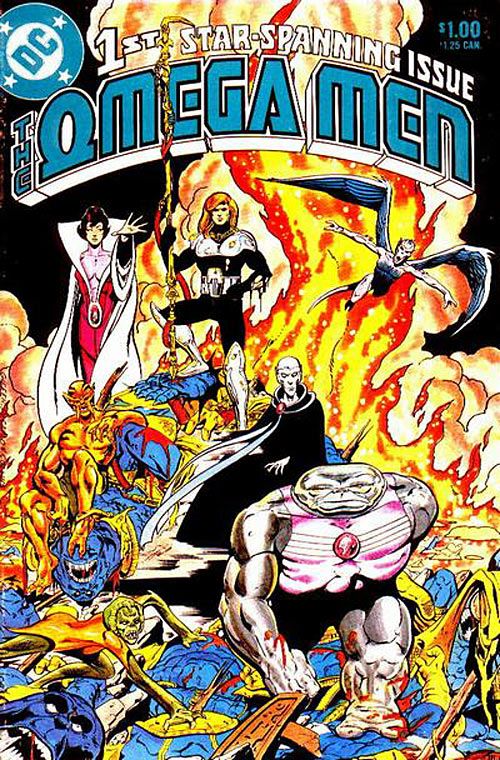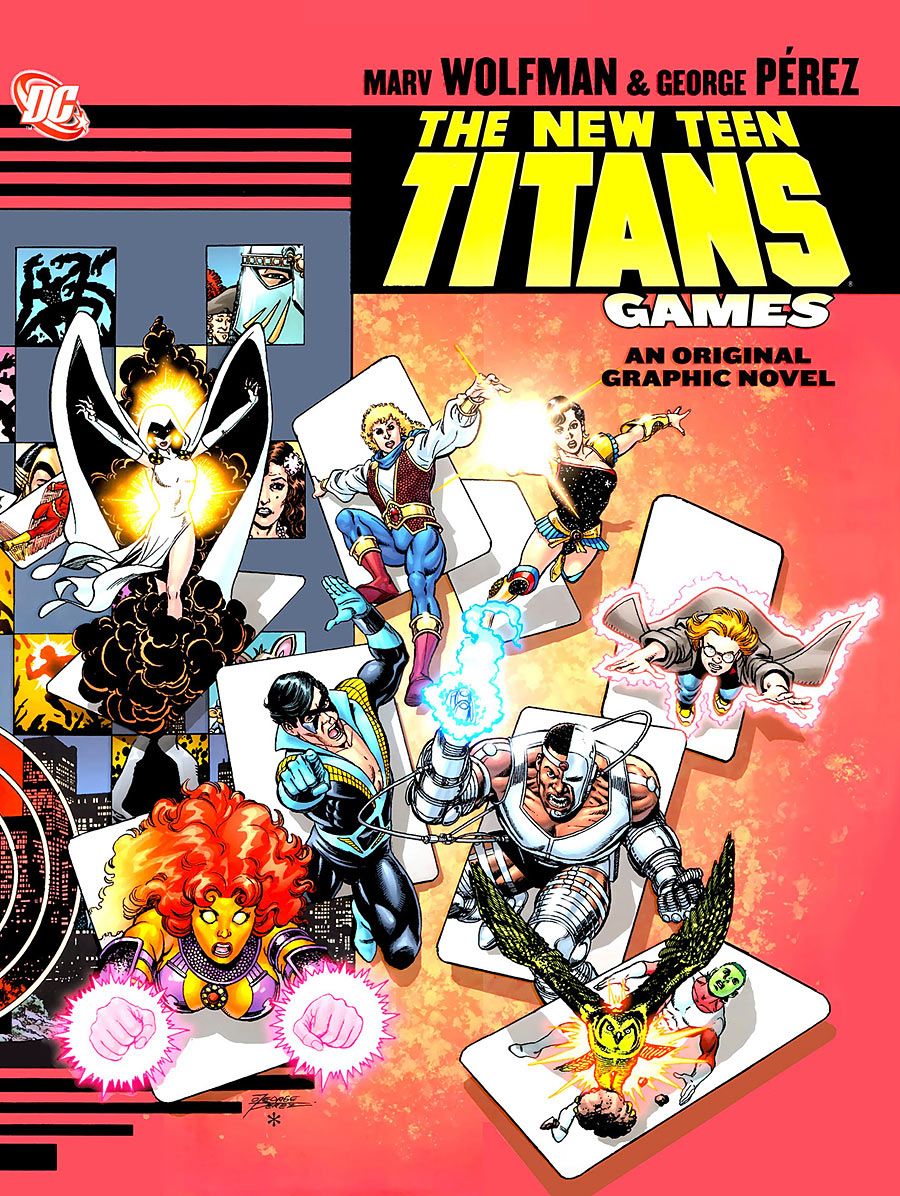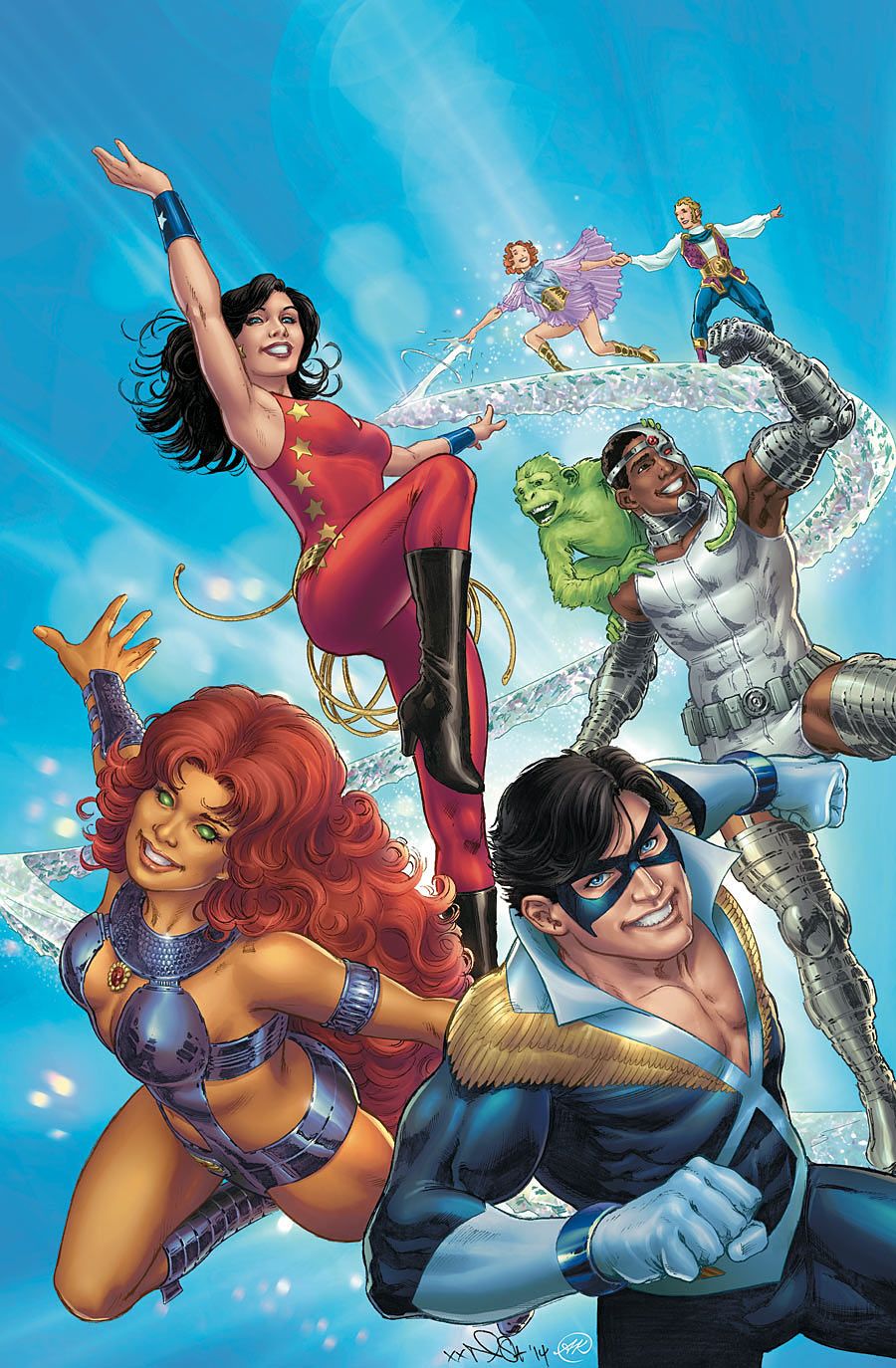Welcome to CBR's second of four CONVERSATIONS OF CONVERGENCE with DC Comics Co-Publisher Dan DiDio.
As comic book readers, retailers, reporters and reviewers converge on DC Comics' event maxi-series, over the next few weeks, DiDio and CBR staff writer Jeffrey Renaud are discussing a specific decade from DC Comics' recent past, searching for answers about what drives an event like "Convergence."
CONVERSATIONS OF CONVERGENCE: DiDio & Wein Talk Jack Kirby at DC, Mega-Events & More
For each conversation, Dan and Jeffrey are also joined by a comic book creator that was integral to the publishers' success during the decade in question.
This week, CONVERSATIONS OF CONVERGENCE looks back at the 1980s as DiDio is joined by living legend Marv Wolfman, who famously collaborated with all-star artist George Perez on "The New Teen Titans" and later "Crisis on Infinite Earths" during the decade that also saw DC Comics release game-changing titles like "Watchmen," "Batman: The Killing Joke" and "The Dark Knight Returns."Dan and Marv, thanks for joining me today.
Check out the conversation with DiDio and Wein via a video below, as well as a full transcript of the conversation.
CBR News: Dan, you weren't working in comics in the 1980s but which comic piqued your interest as a reader during that era?
Dan DiDio: The '80s are a really interesting time in comics. You've got a lot of things happening during that time from "Crisis" to "Watchmen" to "Dark Knight." So many things were taking place and you could feel the industry changing around it. And naturally, as I was getting older as a comic fan, I've been reading comics since the early '70s, it was exciting to see because I felt the comics were maturing along with me so it was a lot of fun to be getting the books at that time.
I also remember during that period of time, black and white comics were breaking out -- really driven by "Teenage Mutant Ninja Turtles." It was a really fun time.
And I'm going to Marv for a second because Marv was a rebel in those days -- in a really good way. I remember as a fan reading all of the different trade and comic press magazines and Marv was really speaking out on creator rights and so many important issues that really helped to define the industry that we're in today.
Marv Wolfman: It was a great time because we were given a lot of freedom. And we were able to use it to try and tell the best comics and we were all very passionate about our work so when things didn't seem to go right, we fought for it. And that's only because every single one of us was passionate about what we were doing. We loved the industry and we loved the business and loved writing the comics. It's very easy to be a rebel when you care that much about something.
I like that, Dan -- a rebel in a good way. Because there are rebels in a bad way. [Laughs]
Wolfman: We were the Young Turks at the time. We were all late teens, early twenties.
Marv, you moved from Marvel Comics to DC Comics in 1980 and while you kickstarted a number of titles upon your arrival, I think the series for which you will forever be linked is "The New Teen Titans," which you relaunched with George Perez. Why do you think the series was so well received?
Wolfman: I think there were several reasons. In the past, whenever you had a group book, the characters were just sort of put together. You would use a lot of pre-existing characters, you'd create a couple of new ones, but you never thought of it as each character working with the others. You just thought of them as all separate characters. When I decided to present an idea for the Titans, my view was that they were a family. They were each created with character sheets. I actually had full sheets defining character, emotions, the powers, how they work off each other, why they would stay together, why they would disagree with each other. Like in a family, there was a reason why they would stay together and also, fight amongst themselves.
Drama is vitally important but I wanted to build a family and I think readers related to that. Each one cared about the other but were independent just like the way when you have a group of fans together, you're arguing tooth and nail, which is the best comic, who can beat who, etc., etc. but you still stay together despite the arguments. I think that made a big difference.
Plus, I think we had some strong stories and George's art was unparalleled.
I want to ask you specifically about one character featured in Teen Titans and that's Dick Grayson. Celebrating his 75th anniversary just one year after Batman and two years after Superman, Dick Grayson -- the original Robin and later Nightwing and even Batman -- is a superhero that countless comic book readers grew up with. Was the fact that he was just like the rest of us -- outside the unparalleled acrobatic skills -- the reason that so many could relate?
Wolfman: Again, if you go back in time, you always have to start with these characters that are special when they're 75 years old even though he doesn't look a day over 23. You start with where they were and he was the first of the kid sidekicks so that he could make Batman more relatable. Everyone else came later no matter what book they were from. But out of all of these kids, the joke was that he was Robin the Boy Hostage because he was just taken captive and Batman would have to rescue him or he would just tell jokes. And all of the teen characters were pretty much the same. But then the '80s came and we started to make changes in that in all of the books. He went to college, he quit college, he had girlfriends. He started to develop as a human being not just as a copy of every other character out there. And I think he was the first one that started to age pretty much at the same rate as the readers. In the stories we did in the previous days, he was 8 to 12, now he was 15, he was 16, he was 17, he was 18 and 19 and we actually took out the word 'teen' when he went over 20. I think, like the readers, he was aging, he had his own opinions, he disagreed with his father -- oh my God, no teen ever did that with his father -- and he took on his own name. He moved away from home and became his own person. I think people can relate to that. I think that was one of the strongest reasons why people were able to grab onto him.
And again, I never want to diminish the art here. George made him as sexy as hell. You can't discount the look of the character. All of the female readers -- and there were tons of them -- wanted him, like we all wanted Starfire. [Laughs]
DiDio: I agree with Marv. One of my biggest concerns when I got to DC was that I worried about that day when Dick Grayson was going to be older than Bruce Wayne. [Laughs] But he kept on again and Bruce didn't. One of the interesting things you see about "Teen Titans" when Marv and George took it over is that they stopped being sidekicks. And they stopped worrying about doing well for their mentors and living up to father's expectations, they became their own characters, their own people. It wasn't just that they were a shadow of one of the other characters standing by. And I can't wait to do a "Robin the Teen Hostage" book, by the way. [Laughs] But the reality is that they stood out as their own people and they came out from under the shadow of their mentors and really stood alone. And I think the name change for Robin to Nightwing really signified that he became his own character and his own story and his own identity that could exist away from Batman and that continues to this day.
As I mentioned, the 1980s also saw the release of titles like "The Watchmen," "Batman: The Killing Joke" and "Batman: The Dark Knight Returns." These were comics that were darker and, as many believed, more reflective than traditional superhero comics. Marv, you also wrote a series in this vein, "The Tomb of Dracula," which served as a precursor to these kinds of comics and actually featured the debut of Blade in 1973. Why did this brand of storytelling transcend what was being done at the time and why do think, looking no further than Christopher Nolan's Dark Knight trilogy, it's remained relevant today?
Wolfman: First of all, I am going to say that I don't prefer the word 'dark' because that implies negative. This is dark, this is evil, this is violent or whatever else. I prefer to think of it as more realistic and more mature. The readers were no longer eight-to-twelve. They were now teenagers and they were in their twenties and their thirties and if you are a 30-year old reader, you're not interested in reading the same types of stories that you were interested in when you were eight. There should be books for every age but on certain books we tried to make it for older readers. I think if George and I had done "New Teen Titans" featuring the 14-year-old Titans that the previous generation of Titans was, 20-year-old readers would not have been interested. The characters were not concerned or did not have the same concerns as the readers. Here, the characters were older, sometimes we haven't said how old they were, and there attitudes reflected the readers' attitudes so older readers kept with the comics, which allowed us to write stories for them while there were still a lot of other comics for the younger audience. I just like to think of it as we started to do more mature comics because our readers were more mature because the readers wanted more depth to it than one hero punching out another hero. They wanted stories that had some depth to it and some nuance.
Dan, as Co-Publisher of DC Comics how do you go about finding a balance between more mature content for your long-time readers and more all-ages concepts for new and, specifically, younger readers?
DiDio: The most interesting thing that we've found working on "Convergence" -- and it just so happened that it's one of those things that just forms in front of you and we just noticed it -- and honestly, as I'm reading the "Convergence" books right now that are revisiting these periods, these characters from earlier times and different places, the writers that have come onboard have approached them in a way that I can tell you for the two months that we're promoting for "Convergence," it feels like an all-ages line -- like never have we had before. It's extraordinarily accessible for characters and stories that you think were retired or might be hard to get into but the storytelling is done in a way that I feel can really be enjoyed on so many levels that readers of all ages can really get behind and enjoy it. It's not pushing some themes or edges that might feel a little too rough for a younger reader but I feel it's still compelling enough to hold the older readers' attention. It was funny how this all formed and I am kind of interested to see how people respond to it. We hear about this all of the time that people wanting more product and wanting more stories that they can hand to a younger reader and can read themselves and that everyone can enjoy together and in this case -- and I don't know if it's because of the perception of the characters that they're writing moving forward or because it's how the writers approached these stories -- but whatever it is, you really feel like we have captured a flavor and a tone that really appeals to everyone. It's kind of interesting.
"Crisis on Infinite Earths" at 30
We're talking about the history of DC Comics as it relates to the line-wide "Convergence" event and Marv, you worked on the granddaddy of all event series, "Crisis on Infinite Earths" in the 1980s. As a creator, how did you approach such a game-changing event series?
First of all, we got "Crisis" approved in something like 1981 and there was even ads for it under the title of "The History of the DC Universe" in the comics so I had a number of years -- because it wasn't going to come out until the 50th anniversary, which was 1985 -- to work it through.
How did you develop a story of that size? It had never been done. Back then there hadn't really even had a maxi-series of that sort. It was 12 issues by itself, a full novel. It wasn't something that was done. A lot of the time was spent figuring out how to handle it, how to develop it, how to decide where it can go.
One of the first things that I decided was that we wanted a lot of readers that weren't reading DC to check out the company and I thought that if all they knew was Superman, Batman and Wonder Woman that may be the reason that they didn't like the comics at that time or that they had read them and didn't feel like they had grown up or whatever else. This was the late '70s, early '80s. Those characters don't appear for the first half-dozen issues of "Crisis." I used all of the other DC characters. To show how powerful, for instance, the villain is, I have him wipe out a supervillain planet, which is essentially showing that in six pages, a villain could kill Superman, Batman and Wonder Woman because he killed the evil versions of all of them. So first, you create a threat. I broke the issues into three four-issue segments with a game-changing twist at the end of each section. Where you thought the series was going, you pull the rug out from under them and you realize that it wasn't. The Monitor was set up to be the hero, the guy who was going to save everything. He gets killed in the fourth issue. The Flash, while we're trying to figure out what he's doing, gets killed in the eighth issue. Each one was very clearly set up so that it was a matter of leading the readers one way, pulling the rug out from under them while knowing in advance what all 12 issues were going to be.
I think that the characters were written in character. I think that it was a very solid story. I read it recently and I was surprised. [Laughs] I don't think that I could do that again. It was so well structured. And George's art was never better. It looked so good and it was really telling the non-DC readers at that time just how cool DC really was.
Dan, looking back at the importance of "Crisis on Infinite Earths" as a whole, can we expect that kind of game-changing event from "Convergence," or is this a different animal and a different kind of break in DC continuity?
DiDio: Let me say one thing first. Monitor dies in "Crisis on Infinite Earths" #4? Spoiler! [Laughs]
There go the trade sales.
DiDio: Exactly. Everybody is thinking that he's the hero and all of sudden everyone knows he's dead in #4. What's the point of reading the last eight? [Laughs] Honestly, what's great about "Crisis on Infinite Earths" is that it is always going to be the event to which all other events will be judged. We can never do any major crossover without being compared to "Crisis." The fact that you are asking this question just proves that point. But I will tell you that "Convergence" is a slightly different animal. We're not looking to reinvent the world. We're looking to explain it. There are events and beats in the stories that really touch upon and actually call back scenes from the original "Crisis on Infinite Earths" and call back to so many different moments from DC's history and find ways to weave them all together in a way that really explains the incredible history of the DC Universe as one continuous story instead of starts and stops.
One of those starts and stops is Marv coming back to the New Teen Titans for the two-issue "Convergence: New Teen Titans." Marv, you've written the characters for what seems like your entire career. Are you excited to return to them?
Wolfman: I've got to say that after I handed in the book, I got a call from Dan and at some point he said, "You really love those characters." And I said, "Absolutely, I still do." Those guys are my babies. They can be changed, they can be altered, they can be whatever and it doesn't matter. They have to grow to the new audience and they have to change because you have to keep books relevant to the new time period. And we've always said that we've done this without realizing for the longest time that if superheroes were created in 1938 with Superman about 25 years later, we suddenly found ourselves in the Silver Age with brand new versions of almost all of the characters -- The Flash, Green Lantern, new Hawkman. Twenty five years after that, we reintroduced to the new generation with "Crisis on Infinite Earths." Twenty five years after that, we did the New 52.
We have to keep the books relevant and I find writing the Titans, no matter what era of the Titans I'm writing, whether in 1984 or watching somebody else write those characters now, you feel so strongly that you were able to create something that left such a lasting impression. And I love writing them. It doesn't matter what time period they take place. I love those characters. George and I did a graphic novel just two years ago -- and that was a 120-page original story -- that's how much we love these guys.
You mentioned watching somebody else writing these characters. You're not working on this series, but one of the titles rolling out of Convergence is a new "Omega Men" series. Were you surprised that they were making a comeback?
Wolfman: I have been pushing for a new "Omega Men" series for ages. I love the concept of the Omega Men but they need to be updated drastically -- a lot of changes made -- but I love the very concept. I am so happy to see that they are going to be coming back.
Ten(!) Things We've Learned About the "New" DC Comics
And Dan, we'll be talking to Dan Jurgens next for CONVERSATIONS OF CONVERGENCE and he's working on "Batman Beyond" and "Bat-Mite" post-"Convergence, two totally different concepts and vibes. There's a real cross-section of new titles forthcoming, much like you did with the New 52. And there seems to be a little bit for everyone. Is that the goal?
DiDio: Absolutely. I think what we're seeing now is a changing marketplace and a changing readership. And the only way that you can find out where the strength in the audience is and how wide the audience is and how diverse the audience is to diversify your product and move it out in so many ways. When we launched the New 52, what we did was a lot of different flavors of the books but they all had the same type of flavor. They all had a very superhero tone even with the Westerns and the war books that we did on top of that. Now I can honestly say that between the style and the type of writing and the type of art and the type of story, we really are very much keeping with the spirit of what we tried to accomplished when we first launched the New 52.
Stay tuned to CBR News for more installments of CONVERSATIONS OF CONVERGENCE and coverage of DC's "Convergence" event.

